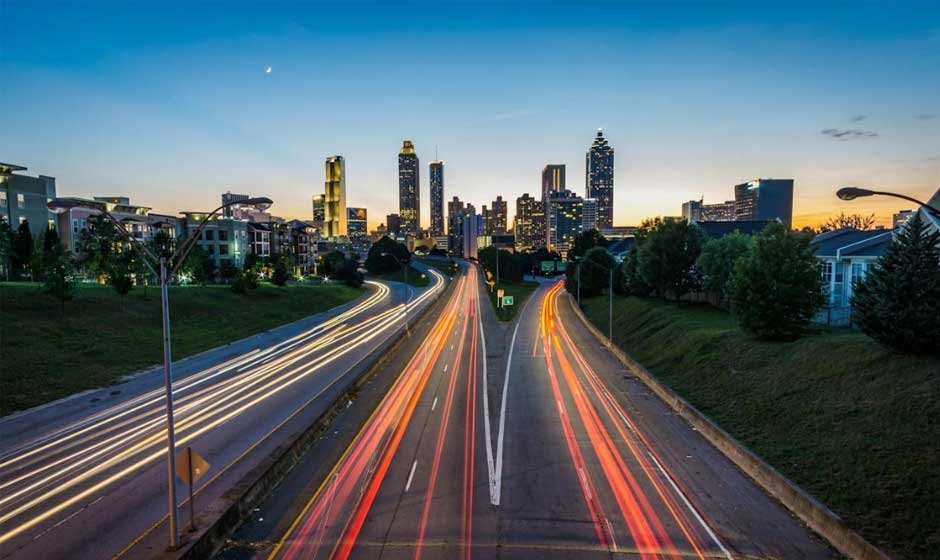At the moment, there’s a lot of focus on how individuals can take action to adopt greener lifestyles. A 2023 Pew Research report — titled Majorities of Americans Prioritize Renewable Energy Back Steps to Address Climate Change — found that 67% of respondents thought the U.S. should prioritize developing alternative energy resources, such as solar power.
There’s a great deal of promising infrastructure development in this area. The U.S. Department of the Interior recently updated its roadmap to expand solar energy development across the Western states.
One of the specific infrastructural tools that holds a lot of potential as we move toward the goal of net-zero energy is solar roadways. These smarter highway surfaces are constructed from solar panels, which help convert energy from the sun into electricity and can promote a safer and more sustainable way of life.
Supportive Green Infrastructure
People need reliable supportive resources before they’re willing to adopt a sustainable lifestyle. Unfortunately, governments often need proof of effectiveness or public demand before they start investing in this infrastructure. After all, it’s a massive logistical and financial undertaking.
This is where solar roadways can be effective. They aren’t just a single tool. Rather, they have the potential to be green infrastructure that supports multifaceted sustainable activities. These include:
- Charging electric vehicles: One of the reasons people are hesitant to buy electric cars is that there is still a lack of reliable charging infrastructure. There are too few charging outlets, particularly around major highways, which makes long journeys unfeasible. Solar roadways may be able to support inductive charging, in which electric cars are charged just by driving on them. This can help meet public needs, perhaps leading to greater adoption of green travel.
- Melting snow and ice: In areas that experience cold weather conditions, there has to be infrastructure to keep roads safe during ice and snow. Unfortunately, at the moment, this isn’t always particularly green as it usually involves gas or diesel county vehicles heading out to salt roads. With solar roadways, solar-powered heating elements are embedded into the surface. These melt the snow and ice, making achieving safety more sustainable.
- Renewability everywhere: Many homes can benefit from technologies like solar panels and even solar shingles— the latter of which can be useful for homes where full panels aren’t an option. However, it’s important for renewable energy to spread beyond homes. Solar roadways can augment a city’s existing energy grid and take advantage of a city’s countless roadways. Doing so helps the city and its populace become a little more sustainable.
At the moment, these solar roadways are largely possibilities. For governments to be willing to genuinely consider investment, there needs to be greater practical research. The first solar roadway, based in Georgia, may prove to be a useful case study here.
Streamlining Emergencies
Solar roadways are getting attention not just for their green possibilities, but also for their potential to make roads safer places. This is particularly relevant at the moment. The U.S. Department of Transportation has reported that road safety progress in the U.S. has stalled in recent years, negatively impacting fatality rates. While safety is certainly heavily influenced by driver behavior, solar roadways can make a difference in efficient responses to accidents.
This is because solar roadways, alongside their solar panels, can contain a range of smart technologies. The rise of the Internet of Things (IoT) means that manufacturers can embed sensors on the road surface that collect and transmit real-time data. For instance, signals on vehicle behavior consistent with an accident could trigger automatic call-outs to emergency services, reducing vital response times.
Another way in which solar roadways may help streamline emergencies is through reliable lighting. Roads can be equipped with solar-powered light-emitting diode (LED) bulbs. When paired with sensors, these smart streetlights can automatically turn on when night falls, and provide several benefits. For one thing, these intelligent lighting systems can help deter crime. Sufficient light systems can also prove useful in health or traffic emergencies. These types of lights would allow other motorists and emergency services to see broken-down vehicles from a distance, minimizing further potential accidents.
Comparing the Risks
Adopting solar roadways isn’t something governments should pursue lightly. Even if you’re planning to advocate for these roads in your area, you should gain a good awareness not just of the great possibilities, but also the challenges. It’s worth taking a moment to compare the risks of solar roadways with those posed by keeping current highways.
At the moment, technology in cars poses some accident risks. Entertainment systems and smartphone integration are among the things that can influence distracted driving. On regular roadways, there’s relatively little recourse other than trusting drivers to make responsible decisions. Solar roadways, on the other hand, may be able to reduce these risks by communicating with on-board technology in the future. For instance, smart sensors could interact with in-car advanced driver assistance systems. They can share data about road conditions and prompt warnings about potential collisions or even initiate emergency braking.
Another of the risks to compare is the financial outlay. There’s no denying that replacing all highways with solar roadways will be a huge investment. The American interstate system is vast, and much of it is remote. Some investors may prefer other options as well. For example, many advocate space-based solar power — another expensive option — as it is efficient, always-on, and uses less land.
Conclusion
Solar roadways could represent another positive step toward a smarter, greener, and safer society. Yes, some challenges need to be addressed, as with all relatively new technology. Nevertheless, officials and citizens alike need to learn more about these types of technology. This gives people the power to collaborate on enhancing the potential for such sustainable and safe tools and finding solutions to the hurdles.











